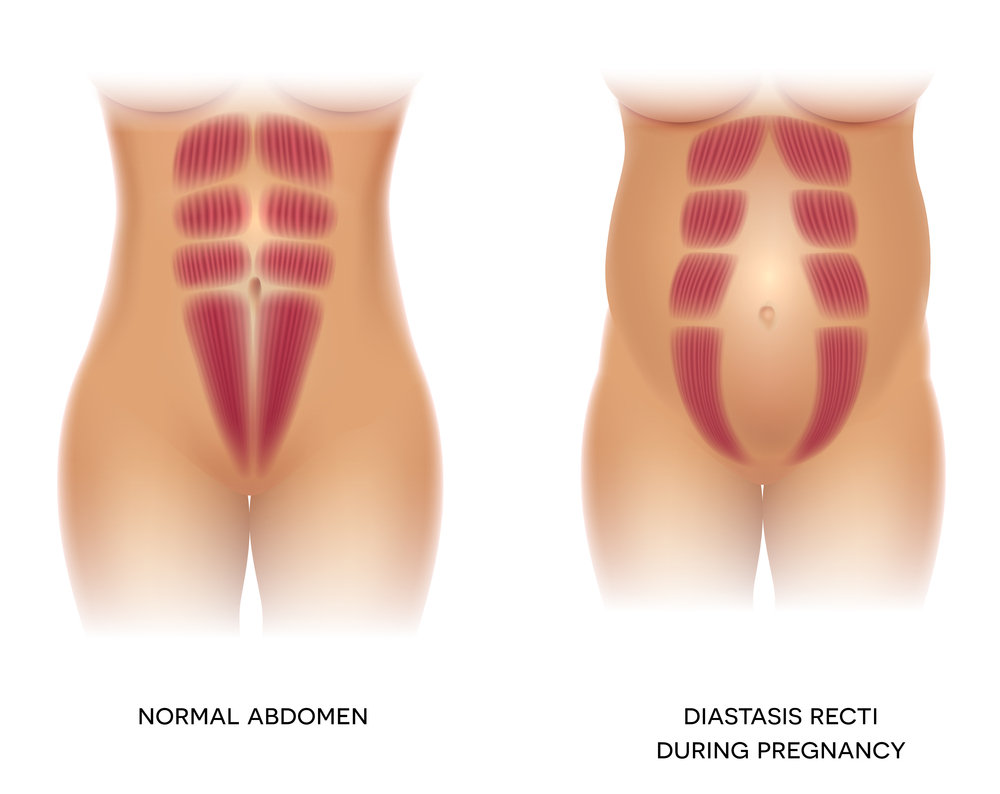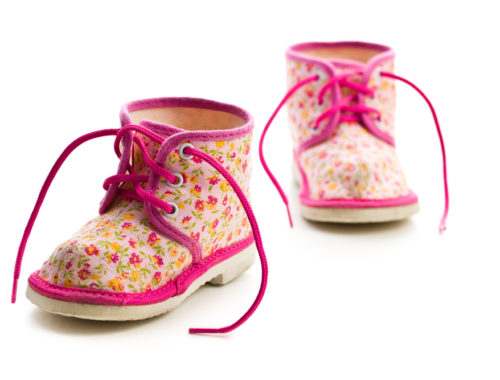During pregnancy, increased pressure on the abdominal wall can cause a condition called diastasis recti. I wish it had a less scary name. Diastasis recti looks like a gorge running vertically down the middle of the belly area. It stretches from the bottom of the breastbone to the belly button, and increases with muscle straining. The middle muscle, the ‘linea alba’, is where our 6-pack usually lies. Chuckle. When the muscles on either side of this line pull apart, women may develop 2 finger’s width of separation (2.7cm or greater) of the abdominus recti muscle (down the centre line of the belly). The area between these two muscles may stick out like a vertical pouch. It’s important to realize that this area is not torn – just temporarily separated.
Who is Likely to Develop Diastasis Recti?
The condition is more common for women who have had multiple pregnancies, or are pregnant with multiple babies. Additionally, very weak core muscles going into pregnancy can mean that the connective tissue will stretch even further than it’s prone to do with hormonal changes. Pregnant women are not the only ones who suffer from this condition, and it can occur after some surgeries and even in men.
 How Do you Know if You Have Diastasis Recti?
How Do you Know if You Have Diastasis Recti?
If you lie on your back with your knees bent, and place your hands on either side of the belly button. Do a half crunch. If there is a gap that measures about 2-3cm, you likely have the condition. Check above and below your belly button as well. It is not typically painful, and until around week 25 of pregnancy you may not be able to tell. Some women have incontinence that lasts greater than about 8 weeks postpartum, which can also be a sign. When the ab muscles separate, the pelvic floor muscles can also be affected.
How to Reduce the Risk of Diastasis Recti During Pregnancy
Much like stretch mark avoidance, many of these ideas work for some women, and not for others. I say they are worth a try! First, avoid sit-ups, crunches and anything that puts strain on the abdominals. You can try a splint or band around the area – even if it doesn’t physically bind these muscles back together, it will remind you to be careful and help improve posture.
Postpartum Exercises for Diastasis Recti
While it may be tempting to hit the gym and double up on crunches and planks, these are not recommended at first. It’s more laying on your back with knees bent and deep breathing to engage the core that will help. Marching on the spot with excellent posture, keeping the core solid and kegel muscles engaged is also a safe and easy recovery tool. I actually did the program from Mama Fit for several weeks and was thrilled with the results. Daily Burn has some great workout tips for diastasis recti, as does Diary of a Fit Mother. Usually the condition will heal on its own, but if it’s been a few months and it still looks as if you are highly pregnant, you should consult a specialist and a trainer proficient in kinesiology. In rare cases, surgery may be required, particularly if there is a hernia involved.
Pin It!





[…] posture had changed and she no longer trusted her core. Finding out later that she had developed diastasis recti, a common condition in pregnancy where frontal abdominal muscles separate, she took […]